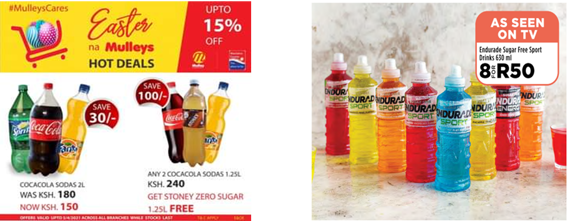With an average inflation rate of 13.5% for 2022, Sub-Saharan Africa (SSA) has been subject to high levels of inflation, thereby placing pressure on both consumers and manufacturers. SSA consumers have become highly price sensitive and are now either downtrading to more affordable products or reducing their overall consumption levels.
Price management strategies dependent on price elasticity
Price point management has emerged as a key mitigation strategy. While manufacturers have the challenge of adjusting their prices to retain profit margins, they must ensure the new product price remains within their targeted band to prevent consumers from downtrading.
However, when setting optimal prices for products, these strategies must be viewed in conjunction with varying price elasticities of demand for different products, which measures the sensitivity of price changes to consumer demand for certain soft drinks.
Energy drinks is the most sensitive category to price changes, forcing manufacturers to be cognizant of the trade-off between price increases and foregone sales. Price sensitivity is high among energy drinks brands due to growing demand and wide brand variety. A strong substitution effect between brands is evident, such as due to large price increases, which encourage consumers to shift to more affordable energy drinks, or alternative soft drinks.
Conversely, concentrates is the least sensitive to price increases, as high levels of brand loyalty exist, with affordable pricing compared to other categories. Moreover, there are limited numbers of concentrate brands available, resulting in relatively subdued competition and allowing for strong price increases without manufacturers running the risk of losing share. As a result, companies are adjusting their prices by considering these elasticities, to maintain stable revenue and profit margins.
Changing promotional windows shows dynamic nature of manufacturers and retailers
Another strategy employed by retailers is longer promotional windows. This strategy has been applied across several distribution channels by large players, such as Coca-Cola and Red Bull, including discounting, buy-one-get-one-free deals, and complementary offerings often sold as a mixer with an alcoholic spirit.

Source: Coca-Cola Beverages Africa - Kenya, Endurade Special South Africa
Importantly, this strategy is considered essential by manufacturers as it is adopted by most competitors, and they cannot run the risk of losing share through consumer brand shifts. Additionally, it is commonplace for promotional windows to be scattered across several categories, allowing companies to offer promotions on a rotational basis. Thus, the overall promotional window for specific categories has not increased significantly, but the overall company promotional window period has expanded, improving brand presence throughout the year, instead of only during peak demand months. In turn, this allows for greater sales through higher volumes than what would have been sold at non-discounted prices, thereby retaining positive revenue growth.
Private label as an inflation mitigator dependent on local context
Private label has a varying degree of popularity across Africa. South Africa is considered the most mature soft drinks market with several dynamic players operating across the country. This high level of competition fosters innovation and as a result, the local industry has a significant private label contribution. Moreover, as private label penetration grows in South Africa, retailers continue to innovate and improve quality year-on-year, with private label quality now comparable with heritage brands.

However, this is not always the case for private label lines. In Kenya for example, private label offerings have not been as successful and do not comprise a significant proportion of the local market. Much of this stems from comparatively low penetration levels of modern retailing, low consumer trust of private label due to counterfeit products, as well as the associated lower levels of quality derived from limited flavour innovation.
Key takeaways for manufacturers and retailers
Soft drinks manufacturers and retailers will need to ensure dynamic and varied strategies to manage rising inflation in Africa, which is expected to continue into 2023. Across these strategies, the main driving concern amongst manufacturers is to preserve affordability, while mitigating the higher input costs associated with rising global inflation.
Effective price point management will need to consider the price elasticity of demand for a given category, as this will determine how much of a price increase a retailer or manufacturer can demand. This means categories with low price elasticity, such as concentrates, are expected to see greater price increases compared to energy drinks, which are highly price sensitive due to strong competition. Secondly, brand promotions are more spread apart from one another, thereby increasing the promotional window for soft drinks overall. In turn, brand owners have extended their promotional windows respectively, to retain their consumer brand loyalty through a strong value proposition. Finally, private label as a retailer strategy will become increasingly prevalent in mature soft drinks markets, as is the case in South Africa. This is due to the established nature of private label, which in some cases, now rivals heritage brands in both quality and value. However, stronger growth of private label is not expected in less developed soft drinks markets, as consumers are still reluctant to move away from heritage brands, until recognition and the quality of private label improves.
Across these strategies, the driving manufacturer concern is to preserve affordability to the consumer, while mitigating the higher input costs associated with rising global inflation.
For further drinks analysis, read our briefing, The Future of Coffee.
